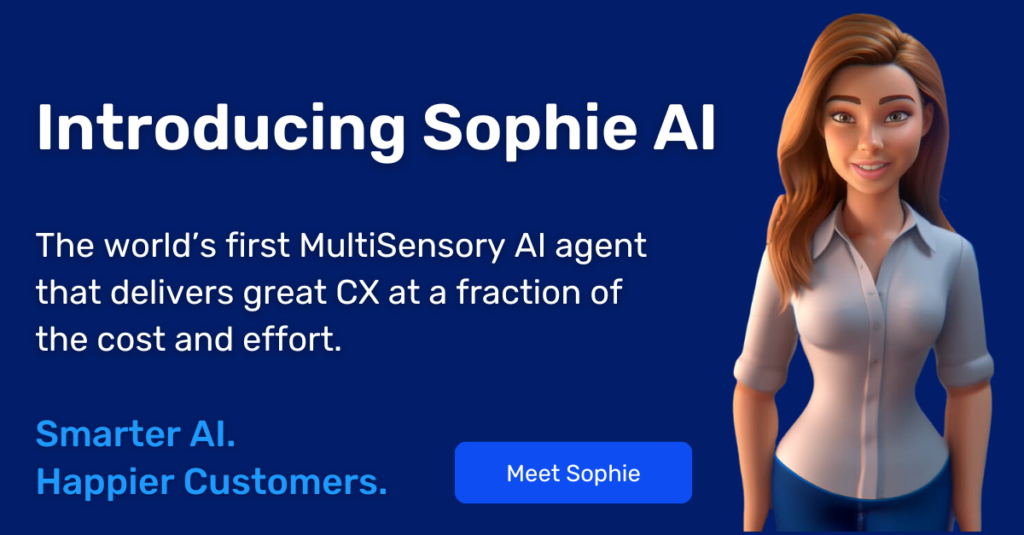Contents
In the world of customer service and technical support, a significant challenge often goes unaddressed: the visual gap. This gap represents the disconnect between customers and service agents, where words fail to convey the full picture of an issue or solution. Without visual assistance, customers struggle to describe technical problems or product statuses, and agents are left to navigate these challenges “blind” without seeing the actual issue. This lack of visual context leads to frustration on both ends—customers feel misunderstood, and agents feel handicapped in providing efficient solutions. This results in long AHT, MTTR, poor FTF, and ultimately, repeated calls, frustration, and, therefore, low CSAT or NPS.
Visual assistance technology emerges as the most effective way to bridge this gap, offering a clear, visual understanding between customers and service personnel. By integrating video and augmented reality (AR) into customer service processes, both parties can see eye-to-eye, literally. This not only alleviates the frustration caused by miscommunication but also significantly enhances the quality and speed of service delivery. Through the lens of visual assistance, we’ll see how companies are transforming their service models, turning potential customer dissatisfaction into opportunities for engagement and resolution.
Elevating Customer Onboarding with Visual Assistance
The journey of customer onboarding, particularly for complex services like fiber internet installation, vividly illustrates the challenges posed by the visual gap. Traditionally, customers navigating the self-installation process encounter various obstacles—from setting up the Optical Network Terminal (ONT) to ensuring proper connectivity. The intricate nature of these tasks, coupled with the absence of visual guidance, often results in up to a shocking 50% failure rate for self-installations. This not only delays the exciting transition to high-speed internet but also burdens the service providers with increased support calls and the need for costly technician dispatches.
Enter visual assistance, a game-changer for both customers and providers. By employing AI-guided visual flows, customers receive step-by-step, easy-to-follow instructions through their smartphone or device screens.
This innovative approach addresses common pain points directly, significantly reducing the complexity of an installation or troubleshooting process using visual AI without facing the myriad challenges of Generative AI automation. For a leading telecom company, integrating visual assistance into their fiber installation protocol automated millions of customer installations, boosting success rates to over 90% and notably reducing the average activation period.
The impact of deploying visual assistance for customer onboarding extends beyond just simplified installations. It fundamentally transforms the customer’s initial interaction with the service, setting a positive tone for the entire customer journey. Satisfaction metrics, such as Customer Satisfaction Scores (CSAT) and Net Promoter Scores (NPS), see substantial improvement, reflecting the smoother, more engaging onboarding experience. Moreover, this initial success builds customer confidence in using digital tools for future service interactions, fostering a more tech-savvy, self-reliant customer base.
Transforming Troubleshooting with Instant Visual Support
Troubleshooting complex issues, such as those encountered by users of Cochlear implant devices, further underscores the value of visual assistance. Previously, resolving intricate technical problems over the phone could take over an hour, taxing both customer patience and service agent resources. For something as important as maintaining someone’s sense of hearing, timely issue resolution is critical. Visual assistance technology cuts through these challenges, enabling service agents to see the issue through the customer’s camera, reducing call durations for challenging issues by 50% and streamlining the resolution process.
This direct visual interaction not only accelerates troubleshooting but also enhances the quality of support provided, making the service experience less stressful and more satisfactory for customers. For individuals relying on Cochlear devices, the swift and effective resolution of technical issues is not just about convenience—it’s about reconnecting them with the world around them. The significant reduction in call duration means users can return to their daily lives quicker, underscoring the profound, positive impact of visual assistance on customer well-being and satisfaction.
Field Service and Remote Technicians: Visual Assistance Solutions Across the Board
In the realm of field service and technical support, visual solutions are revolutionizing traditional practices, offering unprecedented levels of precision and efficiency. Through the power of visual assistance, technicians are now equipped to preemptively tackle service tasks, reducing the need for onsite visits and ensuring first-time resolution.
The following three real-world scenarios demonstrate the effectiveness of visual assistance, from accurate pre-service assessments to real-time virtual troubleshooting and post-service verification.
Preparing for the Job: EV Charging Installation Site Assessment
In the emerging EV market, accurate site assessment for charging installations is crucial. A leading EV charging provider integrated live visual sessions to pre-assess installation sites, which led to the complete removal of onsite expert assessments. By virtually evaluating the site requirements, they were able to deliver quotes 50% faster with 100% accuracy. This shift not only sped up the service process but also substantially reduced operational overhead, achieving more than $250,000 in annual savings.
Service Virtualization: Remote Issue Resolution in Security Systems
For a major security solutions provider, service virtualization became the key to efficiency. Through remote visual support, they resolved numerous customer issues without dispatching service trucks, achieving over 200,000 successful virtual service calls and reducing daily truck rolls by 4,000. This not only resulted in $24 million in savings but also contributed to an environmentally friendly service model: saving over one million truck rolls in just their first year eliminated 8,000 tons of greenhouse gas emissions.
Verifying Job Completion: Telecom Field Task Verification
A top telecom leader faced the challenge of ensuring field service quality during a large-scale fiber network rollout. They utilized TechSee’s Visual Intelligence, a part of the Sophie AI platform, to automate job verification, which allowed them to skyrocket their success rate from 60% to over 95% accuracy in confirming task completion. This reduced follow-up visits, with technicians completing jobs correctly on the first visit, reducing call volume from field technicians and boosting customer satisfaction by ensuring dependable service from the start.
Reimagining the Gap as an Opportunity
Visual assistance is not just closing the visual gap—it’s creating a new paradigm in service and support, driving efficiency, cost savings, and customer happiness. It’s time to explore how visual engagement can supercharge your team and redefine your service delivery.
To see these results in action and discover what visual engagement can do for your organization, book a demo today.







